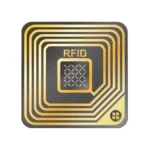To date, Radio Frequency Identification (RFID) technology continues to develop rapidly and has been widely used in various industrial fields. One of its applications is in the automotive industry.
RFID in the automotive industry is widely used in several work sectors. This technology is used to improve efficiency, accuracy, and safety in the production process.
Not only is it useful for speeding up production flow, RFID in the automotive industry also provides significant competitive advantages in terms of supply chain management, asset tracking, and quality control. This article will explain in more detail the applications and benefits of RFID in the automotive industry.
Also Read
Table of Contents
How is RFID in the automotive industry?
Supply chain and inventory management

In the complex automotive supply chain, RFID plays an important role in optimizing inventory management. Vehicle components are supplied from various suppliers and often go through several stages of production at different factories.
RFID is used to track the movement of components in real time and automate inventory calculations. Tags placed on each component allow companies to monitor their location at every point in the supply chain. This reduces the risk of loss or delivery delays.
Calculating component or product stock in warehouses can also be done automatically using RFID technology. This reduces inventory errors and speeds up the stock management process because it does not involve human labor.
Production and assembly lines
RFID in the automotive industry also plays an important role in product lines by facilitating the implementation of just-in-time (JIT) systems. Each vehicle and component will be equipped with a tag containing detailed information about specifications, production status, and assembly sequence.
The attached RFID tags will identify the right components at the right points during the production process. For example, during the assembly stage, components will be detected to see if they are in the right place or not. If a component is not in its proper place, the system will issue a warning to prevent production errors.
The capabilities of RFID technology will make the process more efficient in terms of time and cost. On the other hand, companies can also monitor how long the production stage takes. This will reveal what the production bottlenecks are. Thus, workflows can be optimized.
Asset tracking

RFID technology can also be used to track important assets, such as production equipment, transportation equipment, and shipping containers. By adding tags to assets, automotive companies can monitor asset usage and location and perform proactive maintenance.
RFID enables companies to know the exact location of each asset, thereby minimizing the risk of loss or damage. In addition, this technology can also be used to record asset maintenance schedules. The system will send notifications according to the maintenance schedule, thereby avoiding the risk of equipment damage that could disrupt production.
Quality control
RFID in the automotive industry also plays a role in a critical aspect, namely quality control. This is because even small errors in components can have a major impact on consumer safety.
This technology helps improve quality control by tracking each component and detecting production errors early on. RFID tags collect information such as production date, supplier, vendor, and quality test results, making it easier to trace any issues with the final product.
If an error occurs during assembly or testing, RFID can provide a warning signal. This allows production to be stopped immediately and the problem to be identified quickly.
RFID Regulations for Automotive Devices
Basically, RFID technology requires Radio Frequency (RF) Certification because it is a wireless device that operates within a specific frequency spectrum. Therefore, the same regulations apply to RFID in the automotive industry.
RFID device certification aims to ensure that products comply with government safety and quality regulations and do not interfere with other communication devices. The certification process involves technical testing, such as frequency adjustment, safety checks, and compatibility with the surrounding environment.
Once testing is complete, products that pass will be listed in a Test Report, which confirms that the product is safe and ready for sale. This report assures customers that the product meets technical standards and is safe.


















